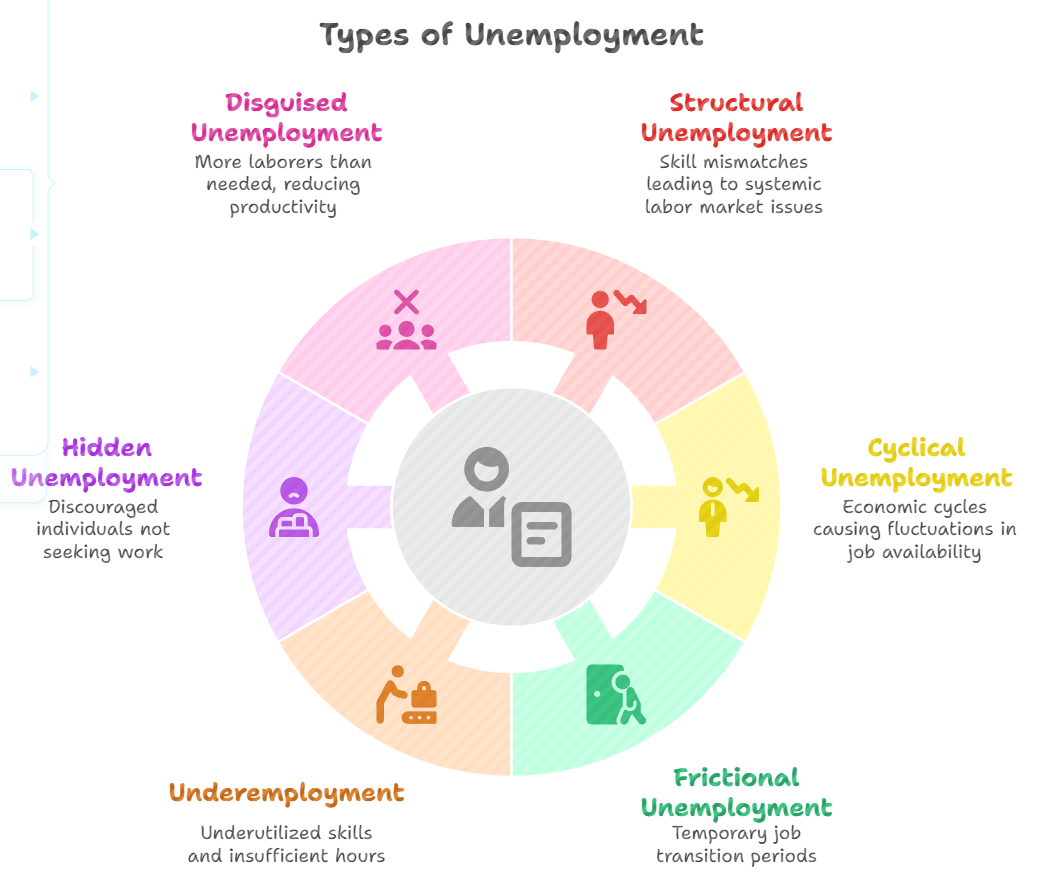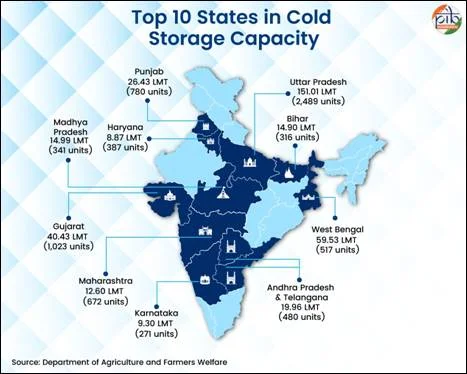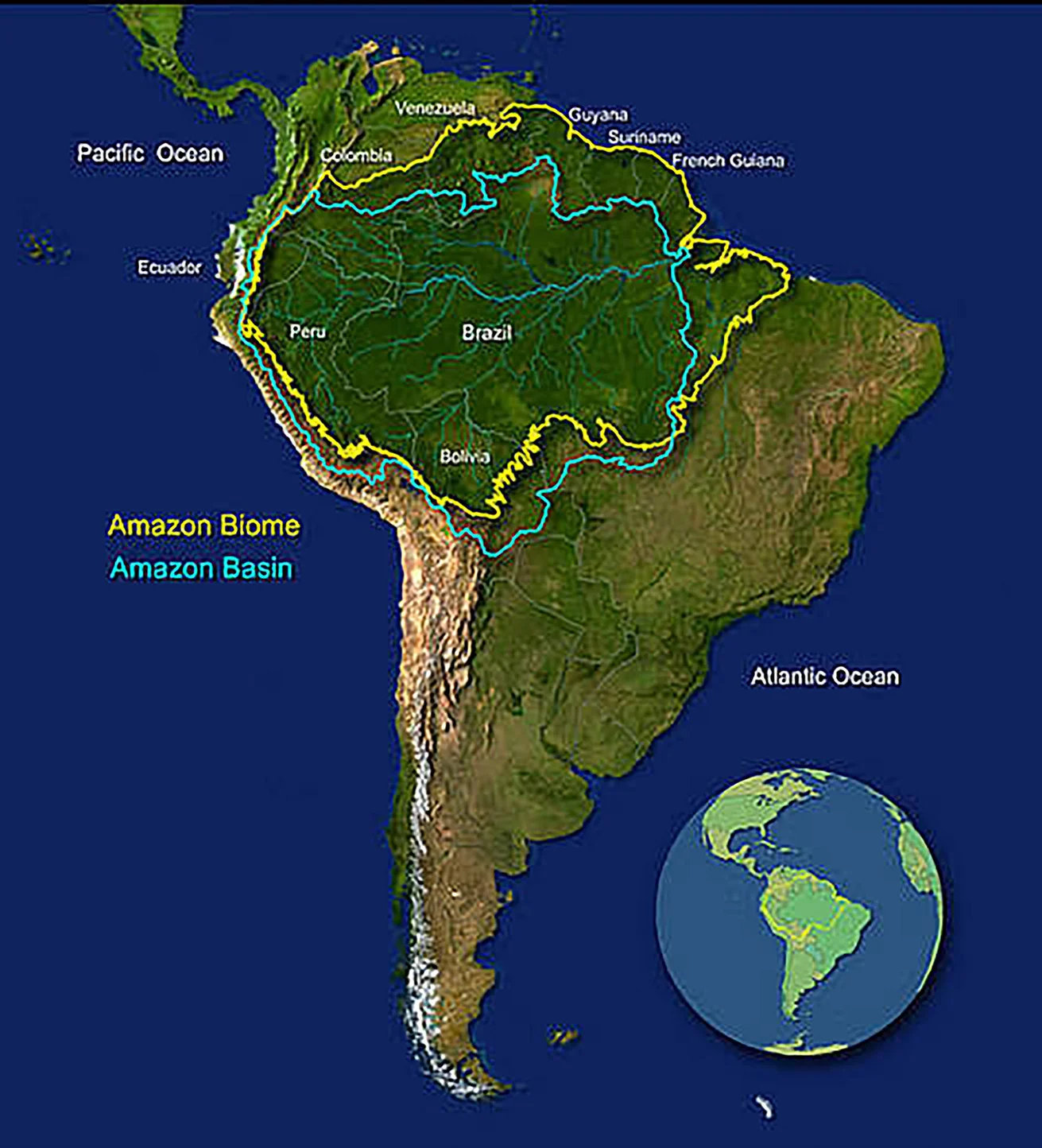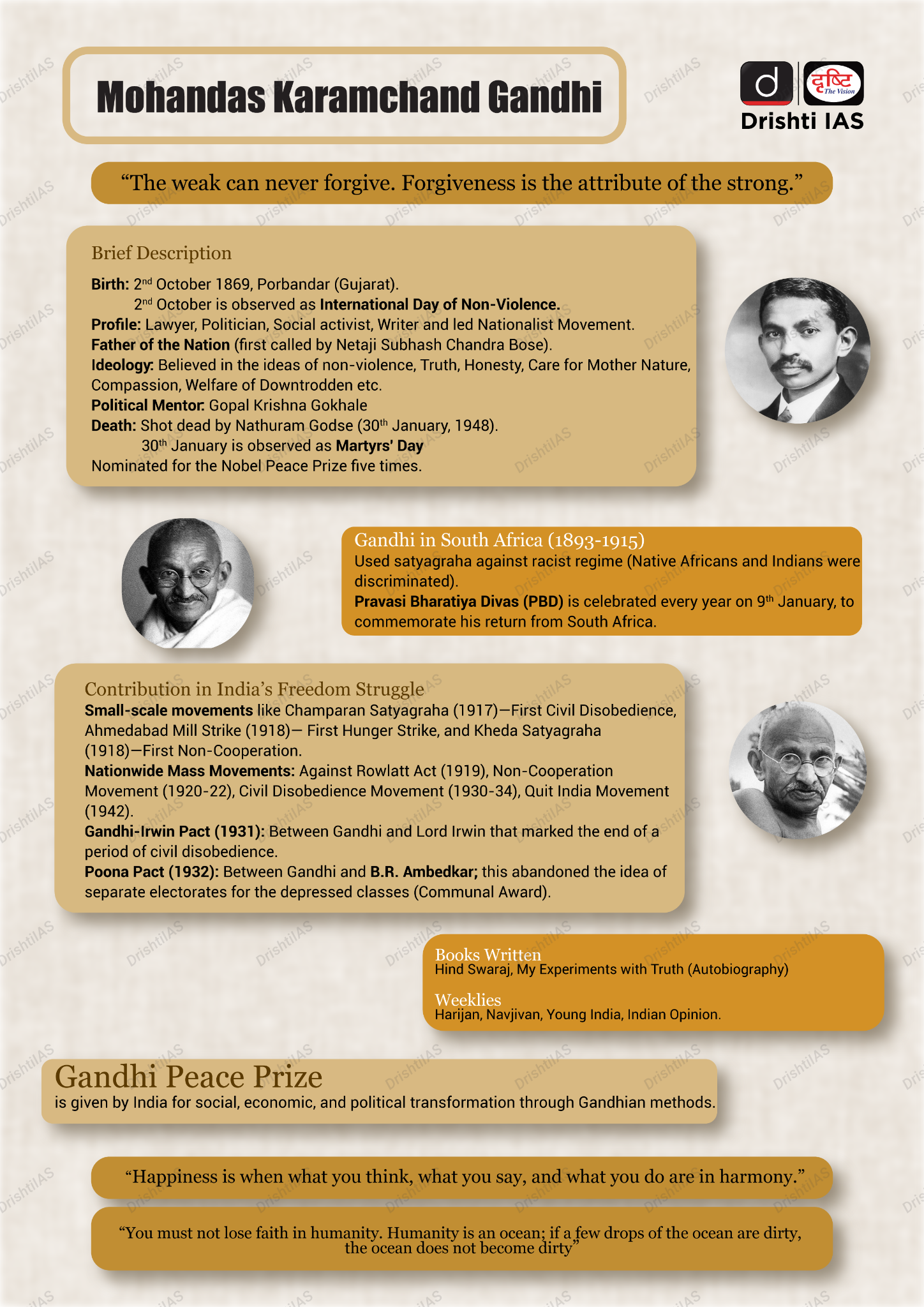Indian Economy
Annual Survey of Industries 2023-24
For Prelims: Annual Survey of Industries, National Statistical Office, Index of Industrial Production , Production Linked Initiative
For Mains: India’s industrial growth, Opportunities and challenges in India’s manufacturing and industrial sector.
Why in News?
The Ministry of Statistics and Programme Implementation (MoSPI) has released the Annual Survey of Industries (ASI) for 2023-24.
What are the Key Highlights of the Annual Survey of Industries (ASI) for 2023-24?
- Gross Value Added (GVA): Grew by 11.89%, higher than both output (5.80%) and input (4.71%), showing better efficiency and higher value generation.
- Top Industries in Terms of GVA: Growth was led by basic metals, motor vehicles, chemicals, food products, and pharmaceuticals, industries that are both export-oriented and labor-intensive.
- Together, these sectors contributed nearly 48% of total industrial output.
- Top 5 states by GVA: Maharashtra (16%), Gujarat (14%), Tamil Nadu (10%), Karnataka (7%), and Uttar Pradesh (7%).
- Top Industries in Terms of GVA: Growth was led by basic metals, motor vehicles, chemicals, food products, and pharmaceuticals, industries that are both export-oriented and labor-intensive.
- Employment: Employment grew 5.92% year-on-year, showing that industrial growth translated into jobs. This sector added more than half a crore (57 lakh) jobs during the last decade 2014-15 to 2023-24.
- Average emoluments rose by 5.6%, keeping pace with output growth, though wage gains still lagged behind overall GVA growth.
- Tamil Nadu, Gujarat, Maharashtra, Uttar Pradesh and Karnataka are the top 5 States in respect of employment.
Annual Survey of Industries (ASI)
- The National Statistical Office (NSO) under MoSPI conducts the ASI, with MoSPI ensuring its coverage and data quality.
- The ASI covers factories registered under the Factories Act, 1948, bidi and cigar units under the Bidi & Cigar Workers Act, 1966, electricity undertakings not registered with the Central Electricity Authority (CEA), and large establishments with 100 or more employees listed in the Business Register of Establishments (BRE) maintained by state governments.
- Key Concepts & Definitions Used in ASI:
- Gross Value Added (GVA): Additional value created by the process of production. This is calculated by deducting the value of total input from total output.
- Total Emoluments: The sum of wages and salaries including bonus.
What are the Opportunities and Challenges to India's Industrial Sector?
|
Opportunities |
Challenges |
|
All India Index of Industrial Production (IIP) recorded a 4.0 % year-on-year growth in August 2025. Manufacturing’s 17% share of GDP, creates opportunities to boost economic growth and global competitiveness. |
Logistics, power, water, ports, and warehousing deficiencies hinder efficiency despite reduced logistics costs. |
|
India attracted USD 81.04 billion in gross foreign direct investment (FDI) in FY 2024-25, with manufacturing FDI rising 18%, positioning India as a global investment hub. |
Micro, Small and Medium Enterprises (MSME) face credit gaps and high borrowing costs despite rising commercial credit exposure. |
|
Rapid modernization in key industries (electronics, pharma, automotive, textiles) provides opportunities for higher value addition and global leadership. |
Low-cost producers like China and Vietnam challenge Indian manufacturers; limited R&D and weak design capabilities restrict global competitiveness. Uneven adoption of Industry 4.0 among MSMEs,and concerns over job displacement from automation, limiting growth. |
|
Initiatives like Production Linked Initiative (PLI), GST reforms, National Manufacturing Mission, and PM MITRA parks create opportunities to scale operations and attract investment. |
Non-tariff barriers, Free Trade Agreements (FTAs) caution, and rising tariffs (e.g., US 50% on Indian exports) impact competitiveness. |
|
Workforce upskilling via Pradhan Mantri Kaushal Vikas Yojana and other programs, along with youth-centric policies, is driving inclusive job creation. |
Only 4.7% of the workforce is formally trained; mismatch between academic training and industrial needs restricts adoption of advanced technologies. |
|
Green manufacturing, renewable energy, and net-zero targets present opportunities for innovation and global market alignment. |
Decarbonization, net-zero commitments, ethanol blending, and compliance with global green standards add increased production costs. |
What Measures can Strengthen Industrial Sector Momentum in India?
- Strategic Industrial Corridors & Smart Cities: Expanding the National Industrial Corridor Programme with Smart Cities enhances connectivity, lowers logistics costs, and attracts investment for balanced regional industrial growth.
- Mission-Driven Sectoral Growth: Leveraging the National Manufacturing Mission (NMM), Make in India, and Atmanirbhar Bharat initiatives can boost priority sectors like electronics, EV batteries, pharmaceuticals, textiles, and renewable energy.
- These missions provide policy clarity, fiscal incentives, and global linkages.
- Skill Development & Workforce Readiness: Programs like PMKVY, Skill India, and sectoral skilling initiatives prepare the workforce for advanced manufacturing, bridging the gap in technical expertise.
- Financial Inclusion & MSME Support: Enhancing access to credit via the Credit Guarantee Fund Scheme, faster GST refunds, and startup incentives ensures MSMEs can scale operations, innovate, and integrate into global value chains.
- Sustainability & Green Manufacturing: Promoting renewable energy adoption, circular economy practices, and compliance with global standards (e.g., EU Carbon Border Adjustment Mechanism (CBAM)) positions India as an eco-conscious manufacturer and strengthens export potential.
- The PLI scheme for Solar PV modules and green hydrogen mission are examples of aligning industrial growth with sustainability.
- Trade Facilitation & Global Best Practices: Improving FTAs, reducing non-tariff barriers, and integrating lessons from Japan’s cluster-based industrialization of interconnected firms can strengthen India’s export competitiveness and value chain integration.
Conclusion
As India targets a USD 35 trillion economy by 2047, manufacturing driven by reforms, PLI, the National Manufacturing Mission, and skill initiatives will be the growth engine. Strong momentum, resilient supply chains, and favorable global realignments position India to become not just the “factory of the world” but a global hub for innovation and industrial leadership.
|
Drishti Mains Question: Critically analyze the opportunities and challenges for India’s manufacturing sector in the context of global competitiveness. |
Frequently Asked Questions (FAQs)
1. What is the Annual Survey of Industries (ASI)?
The ASI, conducted by the National Statistical Office (NSO) under the Ministry of Statistics and Programme Implementation, is the principal source of industrial statistics covering registered factories, electricity undertakings, and large establishments.
2. What was the GVA growth in ASI 2023-24?
Gross Value Added grew by 11.89%, driven by basic metals, motor vehicles, chemicals, food products, and pharmaceuticals.
3. Which states led industrial GVA in 2023-24?
Maharashtra (16%), Gujarat (14%), Tamil Nadu (10%), Karnataka (7%), and Uttar Pradesh (7%) were the top performers.
4. What are the key challenges facing India’s industrial sector?
Key challenges include infrastructure gaps, skill deficits, MSME credit constraints, global competition, sustainability compliance, and trade barriers like high US tariffs and EU’s CBAM.
UPSC Civil Services Examination, Previous Year Questions (PYQs)
Prelims
Q. In the ‘Index of Eight Core Industries’, which one of the following is given the highest weight? (2015)
(a) Coal production
(b) Electricity generation
(c) Fertilizer production
(d) Steel production
Ans: (b)
Mains
Q.1 “Industrial growth rate has lagged behind in the overall growth of Gross-Domestic-Product(GDP) in the post-reform period” Give reasons. How far the recent changes in Industrial Policy capable of increasing the industrial growth rate? (2017)
Q.2 Normally countries shift from agriculture to industry and then later to services, but India shifted directly from agriculture to services. What are the reasons for the huge growth of services vis-a-vis the industry in the country? Can India become a developed country without a strong industrial base? (2014)


Indian Economy
Tackling Unemployment Trap in India
For Prelims: Underemployment, GDP, Mahatma Gandhi National Rural Employment Guarantee Act (MGNREGA), Periodic Labour Force Survey, Unemployment, Artificial Intelligence, MSMEs, Startup India, Production Linked Incentive (PLI) Schemes.
For Mains: Status of Unemployment in India, Reasons and Consequences of Unemployment, Government Initiatives for Employment, and Measures Needed to Curb Unemployment.
Why in News?
As per a leading global financial services firm, India must grow nearly twice as fast (around 12%) to generate enough jobs for its youth and address underemployment, in comparison, the RBI projects only 6.5% GDP growth for FY25, slightly above the 10-year average of 6.1%, highlighting a significant growth-employment gap.
What is the Status of Unemployment in India?
- About Unemployment: Unemployment is when an individual who is not employed and is seeking employment, cannot find work. Unemployment is a key indicator of the health of an economy. It is calculated as:
- Unemployment rate = (Number of Unemployed Workers/Total Labour Force)×100.
- The total labour force includes both employed and unemployed individuals, while those neither employed nor seeking work—such as students—are excluded.
- Unemployment rate = (Number of Unemployed Workers/Total Labour Force)×100.
- State of Unemployment in India:
- High Youth Unemployment: As per the latest Periodic Labour Force Survey (PLFS), India’s overall unemployment rate fell to 5.1%, but among 15–29-year-olds it remained much higher at 14.6%.
- The India Employment Report 2024 by the International Labour Organization (ILO) highlights that one in every three unemployed persons in India is a youth.
- Comparative Context: Asia’s youth unemployment stands at 16%, higher than the US’s 10.5%, with India, China, and Indonesia facing the most pressing youth job challenges.
- High Youth Unemployment: As per the latest Periodic Labour Force Survey (PLFS), India’s overall unemployment rate fell to 5.1%, but among 15–29-year-olds it remained much higher at 14.6%.
- Types of Unemployment:
What are the Reasons for Unemployment in India?
- Demographic Pressure: The World Bank warns that South Asia, including India, is failing to capitalise on its demographic dividend, as employment grew only 1.7% annually (2000–2023) against a 1.9% rise in the working-age population, widening the employment gap.
- Skill Mismatch: Only 4.7% of India’s labour force has received formal skill training, resulting in an underutilized workforce. The education system’s gap in industry-relevant skills has created a paradox of high unemployment alongside talent shortages.
- Educated youth often prefer white-collar jobs over manual or blue-collar work, leading to high educated unemployment.
- Jobless Growth: India’s economic growth of 6.5–7.8% is not creating enough jobs, especially in manufacturing, as India’s global export share of only 1.8% limits manufacturing employment.
- Gender Disparity: Urban female unemployment (ages 15–29) is 25.7%, much higher than males at 15.6%, highlighting social and structural barriers to workforce participation.
- Looming Technological Disruption: The rise of automation and Artificial intelligence (AI) threatens up to 69% of jobs in India (World Bank), particularly in manufacturing, data entry, and customer service, making reskilling and policy adaptation urgent.
- Seasonal Employment and Agriculture Dependency: In 2022–23, about 45.76% of India’s workforce was in agriculture and allied sectors, offering mostly seasonal, underpaid jobs, while limited non-farm opportunities worsened rural underemployment and migration pressures.
How does Unemployment Impact the Economy and Society?
- Economic Stagnation: Unemployment leads to lost GDP and wasted human capital, creating a cycle of low demand as reduced consumer spending forces further business cutbacks.
- Increased Poverty and Inequality: Joblessness directly causes poverty and widens income gaps, as families without stable incomes struggle to afford basic necessities.
- Social Instability: High unemployment, particularly among youth, fuels social unrest, crime, and political instability due to widespread frustration and alienation.
- Mental Health and Skill Crisis: Prolonged unemployment causes psychological distress and deskilling, eroding individuals' employability and self-esteem over time.
- Fiscal Burden on Government: Unemployment simultaneously increases government spending on welfare benefits while reducing tax revenues, worsening the fiscal deficit.
Initiatives Taken by India to Generate Employment
- PM-DAKSH (Pradhan Mantri Dakshta Aur Kushalta Sampann Hitgrahi)
- Mahatma Gandhi National Rural Employment Guarantee Act (MGNREGA)
- Start Up India Scheme
- Support for Marginalized Individuals for Livelihood and Enterprise (SMILE)
- PM SVANidhi Scheme: Offers collateral-free working capital loans to street vendors to revive businesses hit by COVID-19.
- PM Vishwakarma Scheme: Provides end-to-end support to traditional artisans, promoting the Guru-Shishya parampara.
- National Education Policy 2020: Introduces vocational education from Class 9 to enhance youth employability.
- Deen Dayal Antyodaya Yojana-National Rural Livelihoods Mission (DAY-NRLM): Empowers rural poor women through Self-Help Groups, promoting sustainable livelihoods.
- Pradhan Mantri Kaushal Vikas Yojana: Focuses on industry-relevant skill training to improve youth employability.
What Reforms are Needed to Tackle Unemployment in India?
- Boost Labor-Intensive Manufacturing: Focus on high employment multiplier sectors like textiles, apparel, leather, food processing, and electronics assembly, while improving export competitiveness through trade agreements.
- Bridge the Skill Gap: Align education with market needs by integrating vocational and practical skills (AI, data analytics, IoT) and expand reskilling/upskilling programs like Mantri Kaushal Vikas Yojana (PMKVY) for future-ready workers.
- Support MSMEs: Ease credit access and reduce compliance for MSMEs, while promoting start-ups through Startup India, mentorship, patent support, and a stronger venture capital ecosystem.
- Address Underemployment in Agriculture: Diversify the rural economy through agro-based industries, food processing, and infrastructure projects, while strengthening alternative livelihoods like animal husbandry, fisheries, and beekeeping.
- Strategic Government Initiatives: Sustain public investment in infrastructure (roads, railways, ports, housing) and focus on flagship schemes like the Production Linked Incentive (PLI) Schemes to boost manufacturing and generate employment.
Conclusion
Unemployment in India, especially among youth and urban females, remains a pressing challenge due to jobless growth, skill mismatch, underemployment, and technological disruption. Addressing it requires high GDP growth, labor-intensive manufacturing, skill development, MSME support, rural diversification, and strategic government initiatives, ensuring sustainable employment and optimal utilization of the demographic dividend.
|
Drishti Mains Question: Critically analyze the phenomenon of 'jobless growth' in India. Suggest measures to make economic growth more employment-intensive. |
Frequently Asked Questions (FAQs)
1. What is Unemployment?
Unemployment occurs when individuals willing and able to work at prevailing wages cannot find employment.
2. What is meant by 'jobless growth'?
Jobless growth refers to the phenomenon where the economy grows at a rapid pace but fails to generate proportional employment opportunities, especially in the manufacturing sector.
3. Why is there a significant gap between overall and youth unemployment rates?
While India's overall unemployment is 5.1%, youth unemployment stands at 14.6% due to skill mismatches, rapid workforce expansion, and insufficient entry-level job creation in organized sectors.
UPSC Civil Services Examination Previous Year Question (PYQ)
Prelims
Q. Pradhan Mantri MUDRA Yojana is aimed at (2016)
(a) bringing the small entrepreneurs into formal financial system
(b) providing loans to poor farmers for cultivating particular crops
(c) providing pensions to old and destitute persons
(d) funding the voluntary organizations involved in the promotion of skill development and employment generation
Ans: (a)
Q. Disguised unemployment generally means (2013)
(a) large number of people remain unemployed
(b) alternative employment is not available
(c) marginal productivity of labour is zero
(d) productivity of workers is low
Ans: (c)
Mains
Q. Most of the unemployment in India is structural in nature. Examine the methodology adopted to compute unemployment in the country and suggest improvements. (2023)
Q. The nature of economic growth in India in recent times is often described as jobless growth. Do you agree with this view? Give arguments in favor of your answer. (2015)


Facts for UPSC Mains
Food Grain Storage in India
Why in News?
India has achieved a record foodgrain production of 353.96 million tonnes for 2024-25, as per the Third Advance Estimates. To preserve this surplus, modern storage infrastructure is crucial to minimize post-harvest losses, ensure safe storage, and stabilize prices.
What is a Foodgrain Storage System in India?
- About: The foodgrain storage system in India is a network of facilities and mechanisms designed to preserve harvested foodgrains, prevent post-harvest losses, and ensure year-round availability for consumers and the Public Distribution System (PDS).
- It integrates centralized, decentralized, and cold storage infrastructures, linking farmers, state agencies, and markets.
- Around 60-70% of the foodgrain produced is stored at the household level by small farmers, utilizing traditional indigenous storage methods like Morai and Mud Kothi.
Storage System in India
- Government Storage Agencies:
- Food Corporation of India (FCI): Established in 1965 through an Act of Parliament, FCI is the primary agency responsible for the storage of food grains in India.
- It operates food storage depots nationwide, including silos, godowns, and Cover and Plinth (CAP) structures.
- Currently, FCI and State agencies manage 917.83 LMT capacity.
- Central Warehousing Corporation (CWC): Established under the Warehousing Corporations Act, 1962, the CWC manages the storage of agricultural produce and other notified commodities.
- State Warehousing Corporations: These are set up under respective state warehousing Acts to regulate the storage of certain goods within each state.
- Food Corporation of India (FCI): Established in 1965 through an Act of Parliament, FCI is the primary agency responsible for the storage of food grains in India.
- Private Agencies:
- FCI also rents storage capacity from private owners to meet storage needs.
- Other Stakeholders:
- Key contributors to grain management include the Warehouse Development and Regulatory Authority (WDRA), Railways, and the Civil Supply Departments of states.
Importance of Foodgrain Storage
- Reduces Post-Harvest Losses: Proper storage preserves quantity and quality.
- Ensures Food Security: Maintains buffer stocks for PDS and national emergencies.
- Stabilizes Prices: Strategic storage prevents extreme price fluctuations.
- Supports Farmers’ Income: Enables farmers to sell at optimal times, avoiding distress sales.
- Strengthens Food Processing & Supply Chain: Provides raw material availability for industries and export potential.
What Initiatives has India Taken to Enhance Food Grain Storage Infrastructure?
- Agriculture Infrastructure Fund (AIF) was launched in 2020 to strengthen agricultural infrastructure across India.
- It is a medium-long term debt financing facility through interest subvention and credit guarantee support on loans for investment in viable projects for post-harvest management infrastructure and viable farming assets.
- Agricultural Marketing Infrastructure (AMI) scheme is a key component of the Integrated Scheme for Agricultural Marketing (ISAM).
- The objective of this scheme is to strengthen agricultural marketing infrastructure across rural India by providing financial assistance for the construction and renovation of godowns and warehouses.
- Pradhan Mantri Kisan SAMPADA Yojana (PMKSY) is a comprehensive scheme designed to build modern infrastructure for the food processing sector, creating a smooth and efficient supply chain from the farm gate to retail.
- It helps farmers get better prices for their produce, reduces wastage, and supports the goal of doubling farmers’ income especially in rural areas, increases food processing levels, and boosts exports of processed food products.
- Schemes for Augmentation of Storage Capacity
- Construction of Steel Silos for Modernized Storage.
- Private Entrepreneurs Guarantee (PEG) scheme
- Central Sector Scheme “Storage & Godowns” (Focus on NE)
What are the Key Challenges in Maintaining Grain Storage & Suggest Measures to Address Them?
|
Challenges |
Measures to Enhance Grain Storage |
|
High Post-Harvest Losses: India loses about 22% of its foodgrain output annually (~74 million tonnes in 2022-23). |
Expand Scientific Storage: Scale up silos and modern warehouses (e.g., 50,000 MT silo in Bihar inaugurated in 2025). |
|
Storage-Specific Losses: Around 6.58% of foodgrains are lost due to poor storage (pests, rodents, moisture damage). |
Reduce Losses via Better Post-Harvest Practices: Curb cereal losses during drying, cleaning, and marketing by maintaining safe moisture levels. |
|
Economic Burden: Annual storage losses are estimated at worth ₹7,000 crore, with insects responsible for ~₹1,300 crore in losses. |
Encourage PPPs (Public-Private Partnerships): Strengthen the PEG Scheme by providing long-term hiring guarantees to attract private investors. |
|
Dependence on CAP Storage: Nearly 90% of wheat in Punjab is stored under Cover and Plinth (CAP), which is highly vulnerable. |
Empower PACS (Primary Agricultural Credit Societies): Fast-track the computerisation of ~63,000 PACS to benefit ~13 crore farmers and improve transparency. Focus on North-East, hilly, and tribal regions to address storage gaps through targeted schemes. |
Conclusion
India’s journey from food deficit to food surplus has made scientific storage and distribution as critical as production itself. Strengthening storage through modern silos, PACS-based godowns, and cold chain infrastructure will not only reduce post-harvest losses but also ensure price stability, food security, and farmer welfare.
|
Drishti Mains Question: The real challenge to India’s food security is poor grain management rather than a shortage of grain production. Comment. (250 words) |
Frequently Asked Questions (FAQs)
1. What is foodgrain storage infrastructure in India?
It includes FCI godowns, PACS village storage, steel silos, and cold storage facilities. Its purpose is to preserve grains, reduce post-harvest losses, and ensure food security.
2. What are the Key types of storage systems?
India has centralized storage, decentralized storage, and cold storage for perishable commodities like fruits, vegetables, and dairy.
3. How do PACS contribute to storage?
PACS provide village-level storage near farms, helping farmers avoid distress sales, access better prices, and reduce transport costs for the PDS.


Important Facts For Prelims
Amazon Rainforest
Why in News?
A Nature study shows Amazon Rainforest trees are growing larger as rising atmospheric carbon dioxide (CO2) levels triggers the carbon fertilisation effect, enhancing photosynthesis and plant growth, which increases carbon storage and may help offset climate change.
What is the Carbon Fertilisation Effect?
- It is the process where higher levels of CO2 in the atmosphere boost plant growth.
- CO2 is a key ingredient for photosynthesis, so when plants have more of it, they can grow faster, produce more biomass, and often use water more efficiently.
- This effect is seen naturally in forests and crops, and it’s also used artificially in greenhouses to improve yields of vegetables, fruits, and ornamental plants.
- However, this effect is not limitless and depends on other factors like water availability, soil nutrients (especially nitrogen), and temperature, which can constrain or even reverse the benefits
What are the Key Facts About the Amazon Rainforest?
- Location & Size: The Amazon Rainforest, located in South America, is the largest tropical rainforest in the world, covering approximately 6 million sq. km, which is twice the size of India.
- It spans the Amazon River Basin, the largest river basin globally. Around 60% of the rainforest lies in Brazil, with the remainder spread across Peru, Colombia, Venezuela, Ecuador, Bolivia, Guyana, Suriname, and French Guiana.
- Natural Boundaries: The Amazon is naturally bounded by the Guiana Highlands (North), Andes Mountains (West), Brazilian Plateau (South), and the Atlantic Ocean (East).
- Climate Characteristics: The region experiences high rainfall, intense humidity, and uniformly warm temperatures, creating ideal conditions for a dense and continuous rainforest canopy.
- Biodiversity Hotspot: The Amazon is one of the world’s richest biological reservoirs, hosting about 10% of all known wildlife species, many of which are still undocumented.
- Flora: Prominent plant species include myrtle, laurel, palm, acacia, rosewood, Brazil nut tree, rubber tree, mahogany, and cedar.
- Fauna: Iconic wildlife includes jaguar, manatee, tapir, capybara, red deer, monkeys, sloths, caimans, anacondas, tarantulas, toucans, and macaws.
- Protected Areas: The Amazon hosts several key protected areas, including Yasuni National Park (Ecuador), Tumucumaque National Park (Brazil), Jau National Park (Brazil), Pico de Neblina National Park (Brazil), Amacayacu National Natural Park (Colombia), Manu National Park (Peru), and Pacaya-Samiria National Reserve (Peru).
- Global Importance: Amazon Rainforest often called the “Lungs of the Earth”, the Amazon produces about 20% of the world’s oxygen and acts as a crucial carbon sink, moderating global climate change.
- Amazon River: The world’s largest river by discharge and second-longest after the Nile, the Amazon originates in the Peruvian Andes mountains and flows into the Atlantic Ocean.
- Major tributaries include Rio Negro, Madeira, and Xingu. Its watershed spans Brazil, Peru, Ecuador, Colombia, Venezuela, and Bolivia.
Frequently Asked Questions (FAQs)
1. What is the carbon fertilisation effect observed in the Amazon Rainforest?
It is the process where rising atmospheric CO2 boosts photosynthesis and plant growth, increasing biomass and carbon storage, which may help mitigate climate change.
2. Where is the Amazon Rainforest located, and what is its size?
Located in South America, the Amazon Rainforest spans about 6 million sq. km, covering 60% of Brazil and spreading across Peru, Colombia, Venezuela, Ecuador, Bolivia, Guyana, Suriname, and French Guiana.
3. Why is the Amazon Rainforest called the “Lungs of the Earth”?
It produces around 20% of the world’s oxygen and acts as a major carbon sink, regulating global climate and supporting biodiversity.
UPSC Civil Services Examination, Previous Year Questions (PYQs)
Prelims
Q. Consider the following statements: (2023)
Statement-I: The soil in tropical rain forests is rich in nutrients.
Statement-II: The high temperature and moisture of tropical rain forests cause dead organic matter in the soil to decompose quickly.
Which one of the following is correct in respect of the above statements?
(a) Both Statement-I and Statement-II are correct and Statement-II is the correct explanation for Statement-I
(b) Both Statement-I and Statement-II are correct and Statement-II is not the correct explanation for Statement-I
(c) Statement-I is correct but Statement-II is incorrect
(d) statement I is incorrect but statement II is correct.
Ans: d


Important Facts For Prelims
Birth Anniversary of Mahatma Gandhi and Shri Lal Bahadur Shastri
Why in News?
Prime Minister of India paid tributes to Mahatma Gandhi and Shri Lal Bahadur Shastri on their birth anniversaries, recalling their invaluable contributions to India’s freedom, integrity, and nation-building.
Mahatma Gandhi
- Early Life: Born on 2nd October 1869 at Porbandar, Gandhi married Kasturbai in 1882 and studied law in England (1888–91). His legal career soon merged with his moral quest for justice.
- Experiences in South Africa: In 1893, racial humiliation at Pietermaritzburg shaped his resolve against injustice.
- He founded the Natal Indian Congress (1894), launched the newspaper Indian Opinion, established Phoenix Settlement (1904) and Tolstoy Farm (1910) where he evolved Satyagraha as non-violent resistance.
- Return to India: Gandhi returned on 9th January 1915 (now celebrated as Pravasi Bharatiya Diwas) and set up Sabarmati Ashram (1917). He rooted his politics in simplicity, truth, and self-reliance.
- Major Movements: His leadership shone in Champaran Satyagraha (1917), Kheda Kheda Satyagraha (1918), and the Rowlatt Satyagraha (1919). Later, he guided the nation through the Non-Cooperation Movement (1920–22), the Civil Disobedience Movement with Dandi March (1930), and the Quit India Movement (1942).
- Writings & Ideas: Gandhi articulated his vision in Hind Swarajya and his Autobiography titled "An Autobiography: The Story of My Experiments with Truth".
- He promoted Khadi and the Charkha as tools of self-reliance and dignity of labour, and established institutions like the All India Spinners’ Association (1925) and the Harijan Sevak Sangh (1932) to further social and economic reform.
- Legacy: Gandhi’s last years were devoted to communal harmony and upliftment of Harijans. He was assassinated on 30th January 1948.
- Gandhi revered as the “Father of the Nation,” his legacy of truth and non-violence remains globally relevant.
- 2nd October is celebrated as Gandhi Jayanti and globally as the International Day of Non-Violence, as declared by the United Nations.
Gandhian Philosophy in Contemporary Initiatives
|
Initiative |
Gandhian Philosophy |
|
Cleanliness is next to godliness |
|
|
Cooperative economics & grassroots empowerment |
|
|
Swadeshi & village-based production |
|
|
Village self-reliance & Panchayati Raj |
|
|
Tribal advancement for national development |
|
|
Right to dignified work & inclusive development |
Shri Lal Bahadur Shastri
- Early Life: Lal Bahadur Shastri was born on 2nd October 1904 at Mughalsarai, Uttar Pradesh. He was deeply inspired by Mahatma Gandhi’s Non-Cooperation Movement (1920).
- Studied at Kashi Vidyapeeth, Varanasi, where he earned the title “Shastri,” which later became part of his name.
- Role in Freedom Struggle: Actively participated in Civil Disobedience Movement and got arrested multiple times he spent over seven years in British jails.
- Political Career Post-Independence: Became Parliamentary Secretary in Uttar Pradesh (1946), later rising to Home Minister of the state. Later held important Union portfolios (Railways, Transport & Communications, Commerce & Industry, Home Affairs).
- He is well known for resigning as Railway Minister (1956) taking moral responsibility for a train accident, a rare act of political accountability.
- Leadership Qualities: Admired for integrity, humility, and efficiency, earning the title “little dynamo of a man.”
- Prime Ministership: Lal Bahadur Shastri succeeded Jawaharlal Nehru as Prime Minister.
- As Prime Minister (1964–66), Shastri showed firm leadership in the 1965 Indo-Pak war. His enduring legacy lies in the slogan “Jai Jawan, Jai Kisan,” highlighting the twin pillars of national security and food security.
- Shastri died suddenly in Tashkent on 11th January 1966, shortly after signing the Tashkent Declaration.
Frequently Asked Questions (FAQs)
1. When is the International Day of Non-Violence observed and why?
It is observed on 2nd October, Mahatma Gandhi’s birth anniversary, as declared by the UN in 2007, to spread Gandhian ideals of peace and non-violence.
2. Which was Mahatma Gandhi’s first successful Satyagraha in India?
The Champaran Satyagraha (1917), addressing indigo farmers’ exploitation in Bihar.
3. What was Lal Bahadur Shastri’s famous slogan and its significance?
“Jai Jawan, Jai Kisan” (1965), highlighting the twin pillars of national defense and food security.
UPSC Civil Services Examination, Previous Year Questions (PYQs)
Prelims
Q. Who among the following is associated with ‘Songs from Prison’, a translation of ancient India religious lyrics in English? (2021)
A. Bal Gangadhar Tilak
B. Jawaharlal Nehru
C. Mohandas Karamchand Gandhi
D. Sarojini Naidu
Ans: C
Q: With reference to the British colonial rule in India, consider the following statements: ( 2019)
- Mahatma Gandhi was instrumental in the abolition of the system of ‘indentured labour’.
- In Lord Chelmsford’s ‘War Conference’, Mahatma Gandhi did not support the resolution on recruiting Indians for World War.
- Consequent upon the breaking of the Salt Law by the Indian people, the Indian National Congress was declared illegal by the colonial rulers.
Which of the statements given above are correct?
A. 1 and 2 only
B. 1 and 3 only
C. 2 and 3 only
D. 1, 2 and 3
Ans: B


Rapid Fire
Mutual Legal Assistance Treaty (MLAT)
The Government of India has invoked the Mutual Legal Assistance Treaty (MLAT) with Singapore to ensure cooperation in the investigation into the death of singer Zubeen Garg, who died in Singapore.
- Mutual Legal Assistance Treaties (MLATs): These are bilateral or multilateral agreements that enable countries to cooperate in criminal matters such as terrorism, trafficking, cybercrime, smuggling, and financial frauds.
- MLATs provide a structured and legally binding framework for investigation, evidence sharing, and prosecution, ensuring that criminals do not escape justice due to jurisdictional gaps.
- Significance: MLATs strengthen international cooperation, reciprocity, and speed in handling transnational crimes.
- India’s Approach: India provides Mutual Legal Assistance (MLA) through bilateral/multilateral treaties, international conventions, or reciprocity.
- India has signed MLATs with 42 countries (as of 2019). In India the MLA requests are routed through the Ministry of Home Affairs (MHA), which acts as the Central Authority, with support from the Ministry of External Affairs (MEA) when required through diplomatic channels.
India’s International Conventions on Mutual Legal Assistance
- United Nations Convention Against Transnational Organized Crime, 2000
- United Nations Convention Against Corruption, 2003
- United Nations Convention Against Illicit Traffic in Narcotic Drugs and Psychotropic Substances, 1988 (Vienna Convention)
- Hague Convention
- SAARC Convention
- Commonwealth Scheme (Harare Scheme)
| Read more: India and International Law: Part-1 |
Rapid Fire
Electronics Component Manufacturing Scheme (ECMS)
India’s Electronics Component Manufacturing Scheme (ECMS) has drawn USD 13 billion investment proposals, nearly double its target. With 60% participation from MSMEs, the scheme is set to boost domestic production, reduce import dependence, and create 1.41 lakh direct jobs, strengthening India’s push to become a global electronics hub.
- About: The ECMS, launched in April 2025 as a complement to the India Semiconductor Mission, seeks to strengthen India’s electronics value chain beyond finished goods and chip fabrication by boosting Domestic Value Addition (DVA) and linking Indian firms with Global Value Chains (GVCs).
- ECMS supports horizontal linkages with automobile, power, and industrial sectors.
- Scheme Tenure: 6 years (1 year of gestation period) i.e. from FY2025-26 to FY2031-32.
- Incentive Structure: The ECMS provides turnover-linked, capex-linked, or hybrid fiscal incentives, with a portion of both turnover and capex incentives linked to employment generation.
- Incentives will be given on a first-come, first-served basis to firms ready for early production.
- Significance: Electronics is India's third-largest export, with the country being the 2nd-largest mobile manufacturer globally. The ECMS, along with Production Linked Incentive (PLI) and semiconductor initiatives, is crucial for establishing a USD 500 billion electronics manufacturing ecosystem by 2030-31.
| Read more: Unleashing the Potential of Electronics Manufacturing |











